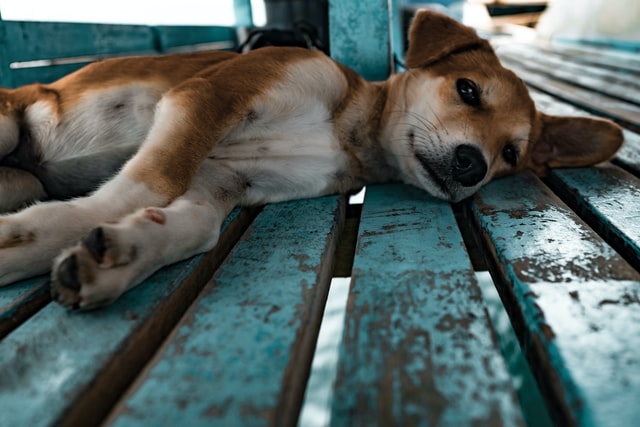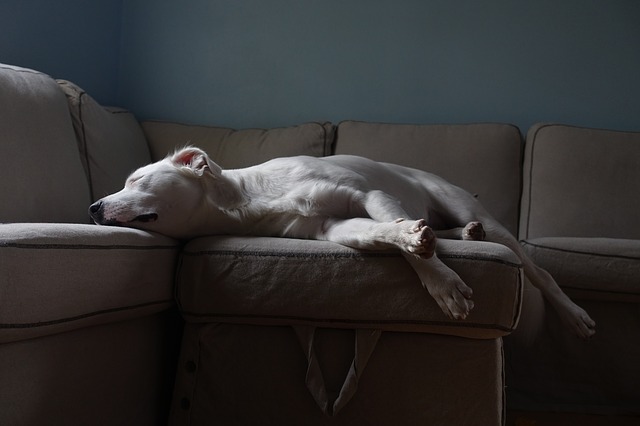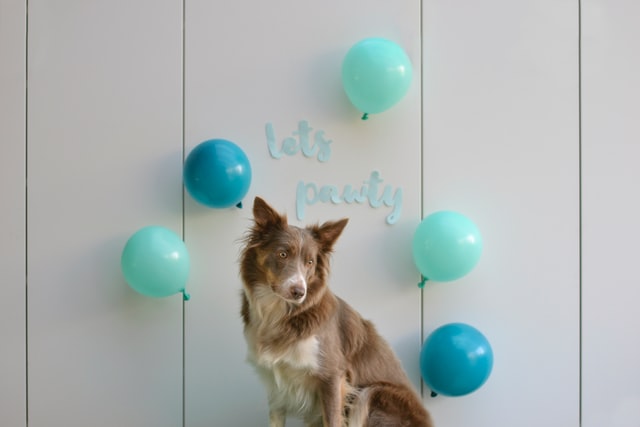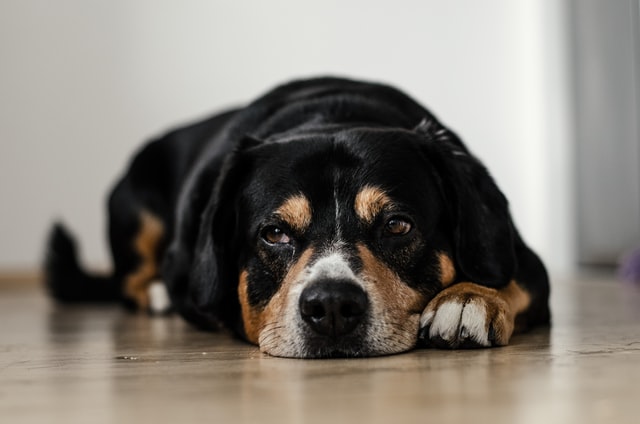Separation Anxiety is a disorder where dogs experience anxiety when left alone. This can be diagnosed based on the dog’s behavior and his pet parent’s account of what their pup is like when they’re home. It is essential to diagnose this problem correctly because there are other psychological disorders that could be causing the dog’s worrisome behaviors such as aggression.
According to this, greyhounds are more prone than other breeds to developing separation anxiety because greyhounds have been bred for over 100 years specifically for racing in packs or “harems.” These pack animals were not meant to live alone in small yards with fences all around them. They need companionship and freedom which means greyhounds may suffer from severe stress when they’re left alone for extended periods of time.
It is also difficult to diagnose greyhound separation anxiety because many greyhounds are used to being kept in crates and kennels where they were watched over by their greyhound racing trainers. Some greyhounds who were retired from racing become destructive because they develop a neurotic behavior that is rooted in the greyhound’s desire to search for his pack or greyhound racing family.

What is separation anxiety in a greyhound?
Greyhounds are a breed of a greyhound dog, and as such, they have a number of inherent traits. One of those traits is an extreme sensitivity to being left alone. As a greyhound’s owner, it is important to be aware of the signs and symptoms that your greyhound may show when you’re not home. If your greyhound exhibits any of these signs then he may be suffering from separation anxiety disorder: vocalization, destructive behavior, anxiety, and fearfulness.
It is essential to diagnose this disorder correctly because there may also be other psychological disorders that could be causing the dog’s worrisome behavior such as aggression. It can be difficult to diagnose because there are no detectable physical abnormalities in greyhounds with separation anxiety disorder.
If you suspect that your greyhound may be suffering from a separation anxiety disorder, then there are certain steps you can take to help him cope with the problem. It’s good to start early because greyhounds who develop this behavior as puppies will find it nearly impossible to break free of it. Some helpful tips include: spend less time away from your greyhound, arrange for a friend or family member to come and spend time with your greyhound when you’re gone, exercise your greyhound before you leave and after you return.
Why do greyhounds have Separation Anxiety?
Greyhounds are prey-driven dogs and they lack the typical confidence that most other breeds have. This, combined with greyhound’s strong need to please their owners makes them particularly susceptible to becoming anxious when left alone. It takes a great deal of work for greyhound adopters and caregivers alike to train your dog not to be reactive around other animals or people in public places, but if we were able to accomplish this it would significantly reduce our dog’s separation anxiety.
Signs of separation anxiety in greyhounds
The signs of greyhound separation anxiety are often destructive behavior, vocalization, anxiety, and fear. The dog’s destructive behavior can be categorized into chewing on things or peeing in the house. They can also vocalize in response to being alone by howling, whining, barking too much, or not enough. Their anxiety may show in various ways such as panting excessively in an attempt to cool down in case they’re overheating. Signs of fear related to separation anxiety in greyhounds will happen when the dog is left alone and when approached by strangers. A greyhound’s separation anxiety is often worse if their pet parent leaves the home through the front door.
This disorder can be diagnosed by looking at the dog’s behavior and his pet parent’s account of what their greyhound pup is like when they’re home. It is essential to diagnose this problem correctly because there are other psychological disorders that could be causing the greyhound’s worrisome behaviors such as aggression.
How to Assist Your Greyhound in Overcoming Its Fear of Being Alone on Their Own:
If you own a greyhound and have been noticing that your pup is exhibiting behaviors of being afraid or anxious when left on their own, then there are a few things you can do to help them in overcoming their fear. Some greyhounds may become destructive in this situation and vocalize in a fearful manner. It is essential to diagnose this problem correctly because there are other psychological disorders that could be causing the dog’s worrisome behaviors such as aggression.
Providing greyhounds with a crate when they get home can decrease their anxiety levels significantly for greyhounds who suffer from a separation anxiety disorder. It is also important to get your greyhound used to spending time alone (without you) at an early age so they don’t fear being alone for too long.
Also Read: How to crate train a rescue dog with separation anxiety
Your greyhound will generally become more anxious when they are in a new environment, so it is essential to have the greyhound in the same home/environment for quite some time so their anxiety can decrease significantly. If your greyhound’s separation anxiety disorder continues to worsen, you may need to speak with your vet about trying greyhound-specific anti-anxiety medications to help them cope with their disorder.
A greyhound usually becomes more stressed when they know you are leaving, so try to avoid letting your greyhound see you leave for work/school/friends’ houses, etc., this will make the greyhound less anxious because they won’t know when you’ll be back. A greyhound may also become more anxious and destructive if they are not exercised enough or if their diet is not right, so make sure your greyhound gets the exercise they need to tire them out physically as well as mentally.
Tips for dealing with separation anxiety in greyhound
Watch your greyhound for signs of anxiety. Look for vocalizations, inappropriate elimination, or destruction of furniture or other property that may be more pronounced when left alone. To help alleviate the anxiety, you can spend time with your greyhound during their first few hours of being home alone. Create a ritual by doing something fun together like playing some games or taking them outside for a walk around the neighborhood.
General tips for dealing with separation anxiety in greyhounds:
- Socialize your greyhound to limit their fearfulness and anxious behaviors when left at home alone.
- Take time to bond with your greyhound when they return from being left home alone.
- Break up their time alone by providing mental activities they enjoy until you return.
- Never punish your greyhound for any behaviors they display when left alone; it will only make the anxiety worse. Reward desired behaviors like quiet behavior or resting calmly instead of barking, scratching at the door, or chewing on something to keep them occupied and calm.
- Be mindful of your greyhound’s needs and make sure to take them out for bathroom breaks, playtime, or to go on a walk when you return home. This will help reinforce that being left alone doesn’t have to be a bad experience.
Conclusion
Greyhounds are prone to separation anxiety and can be destructive, vocal, anxious, and fearful when left alone. Separation Anxiety Disorder is a condition that greyhound owners should diagnose correctly because there are other psychological disorders that could cause worrisome behavior such as aggression. There may be some interventions for greyhound separation anxiety like (1) limiting your greyhound’s access to the area you’re leaving them in; (2) having another person or pet present with your greyhound; or (3) slowly introducing them to being by themselves over time. If none of these options work out well enough – it would be best if you consult a professional dog trainer who specializes in behavioral problems.





